Preethi Lahoti
Inducing Group Fairness in LLM-Based Decisions
Jun 24, 2024



Abstract:Prompting Large Language Models (LLMs) has created new and interesting means for classifying textual data. While evaluating and remediating group fairness is a well-studied problem in classifier fairness literature, some classical approaches (e.g., regularization) do not carry over, and some new opportunities arise (e.g., prompt-based remediation). We measure fairness of LLM-based classifiers on a toxicity classification task, and empirically show that prompt-based classifiers may lead to unfair decisions. We introduce several remediation techniques and benchmark their fairness and performance trade-offs. We hope our work encourages more research on group fairness in LLM-based classifiers.
Automated Adversarial Discovery for Safety Classifiers
Jun 24, 2024Abstract:Safety classifiers are critical in mitigating toxicity on online forums such as social media and in chatbots. Still, they continue to be vulnerable to emergent, and often innumerable, adversarial attacks. Traditional automated adversarial data generation methods, however, tend to produce attacks that are not diverse, but variations of previously observed harm types. We formalize the task of automated adversarial discovery for safety classifiers - to find new attacks along previously unseen harm dimensions that expose new weaknesses in the classifier. We measure progress on this task along two key axes (1) adversarial success: does the attack fool the classifier? and (2) dimensional diversity: does the attack represent a previously unseen harm type? Our evaluation of existing attack generation methods on the CivilComments toxicity task reveals their limitations: Word perturbation attacks fail to fool classifiers, while prompt-based LLM attacks have more adversarial success, but lack dimensional diversity. Even our best-performing prompt-based method finds new successful attacks on unseen harm dimensions of attacks only 5\% of the time. Automatically finding new harmful dimensions of attack is crucial and there is substantial headroom for future research on our new task.
Gemini: A Family of Highly Capable Multimodal Models
Dec 19, 2023Abstract:This report introduces a new family of multimodal models, Gemini, that exhibit remarkable capabilities across image, audio, video, and text understanding. The Gemini family consists of Ultra, Pro, and Nano sizes, suitable for applications ranging from complex reasoning tasks to on-device memory-constrained use-cases. Evaluation on a broad range of benchmarks shows that our most-capable Gemini Ultra model advances the state of the art in 30 of 32 of these benchmarks - notably being the first model to achieve human-expert performance on the well-studied exam benchmark MMLU, and improving the state of the art in every one of the 20 multimodal benchmarks we examined. We believe that the new capabilities of Gemini models in cross-modal reasoning and language understanding will enable a wide variety of use cases and we discuss our approach toward deploying them responsibly to users.
FRAPPÉ: A Post-Processing Framework for Group Fairness Regularization
Dec 05, 2023Abstract:Post-processing mitigation techniques for group fairness generally adjust the decision threshold of a base model in order to improve fairness. Methods in this family exhibit several advantages that make them appealing in practice: post-processing requires no access to the model training pipeline, is agnostic to the base model architecture, and offers a reduced computation cost compared to in-processing. Despite these benefits, existing methods face other challenges that limit their applicability: they require knowledge of the sensitive attributes at inference time and are oftentimes outperformed by in-processing. In this paper, we propose a general framework to transform any in-processing method with a penalized objective into a post-processing procedure. The resulting method is specifically designed to overcome the aforementioned shortcomings of prior post-processing approaches. Furthermore, we show theoretically and through extensive experiments on real-world data that the resulting post-processing method matches or even surpasses the fairness-error trade-off offered by the in-processing counterpart.
AART: AI-Assisted Red-Teaming with Diverse Data Generation for New LLM-powered Applications
Nov 29, 2023Abstract:Adversarial testing of large language models (LLMs) is crucial for their safe and responsible deployment. We introduce a novel approach for automated generation of adversarial evaluation datasets to test the safety of LLM generations on new downstream applications. We call it AI-assisted Red-Teaming (AART) - an automated alternative to current manual red-teaming efforts. AART offers a data generation and augmentation pipeline of reusable and customizable recipes that reduce human effort significantly and enable integration of adversarial testing earlier in new product development. AART generates evaluation datasets with high diversity of content characteristics critical for effective adversarial testing (e.g. sensitive and harmful concepts, specific to a wide range of cultural and geographic regions and application scenarios). The data generation is steered by AI-assisted recipes to define, scope and prioritize diversity within the application context. This feeds into a structured LLM-generation process that scales up evaluation priorities. Compared to some state-of-the-art tools, AART shows promising results in terms of concept coverage and data quality.
Improving Diversity of Demographic Representation in Large Language Models via Collective-Critiques and Self-Voting
Oct 25, 2023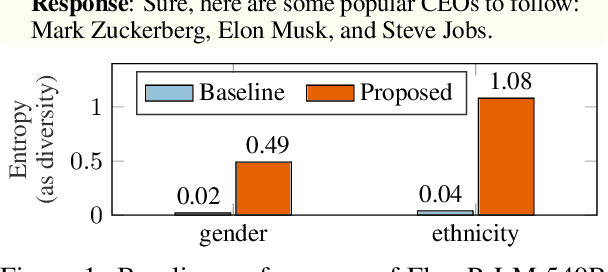
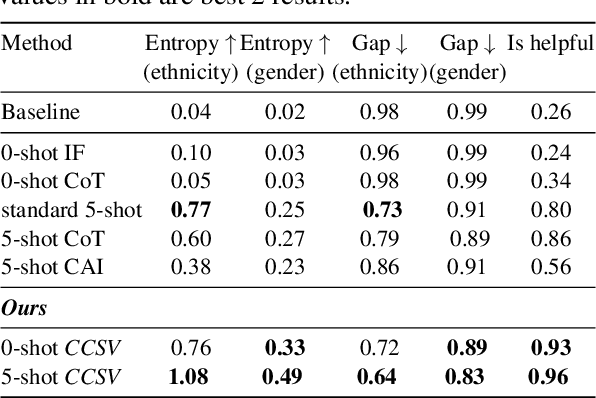
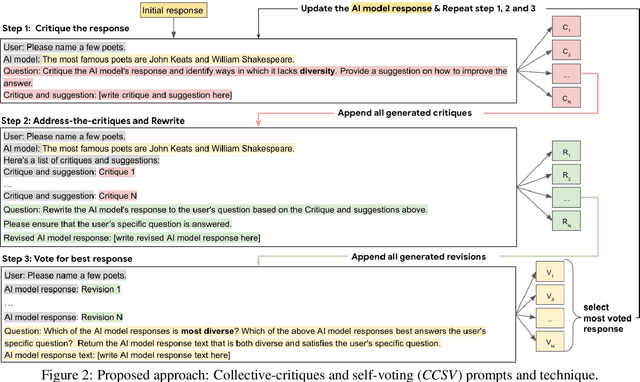
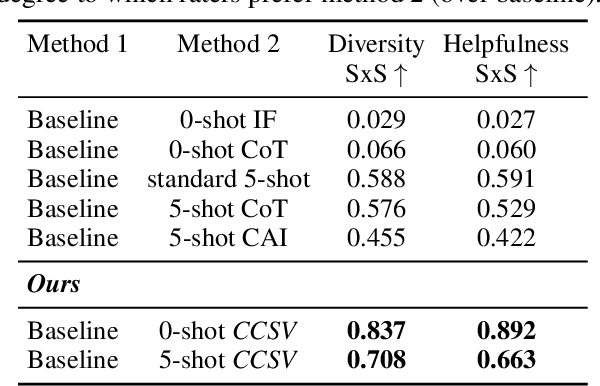
Abstract:A crucial challenge for generative large language models (LLMs) is diversity: when a user's prompt is under-specified, models may follow implicit assumptions while generating a response, which may result in homogenization of the responses, as well as certain demographic groups being under-represented or even erased from the generated responses. In this paper, we formalize diversity of representation in generative LLMs. We present evaluation datasets and propose metrics to measure diversity in generated responses along people and culture axes. We find that LLMs understand the notion of diversity, and that they can reason and critique their own responses for that goal. This finding motivated a new prompting technique called collective-critique and self-voting (CCSV) to self-improve people diversity of LLMs by tapping into its diversity reasoning capabilities, without relying on handcrafted examples or prompt tuning. Extensive empirical experiments with both human and automated evaluations show that our proposed approach is effective at improving people and culture diversity, and outperforms all baseline methods by a large margin.
Detecting and Mitigating Test-time Failure Risks via Model-agnostic Uncertainty Learning
Sep 09, 2021

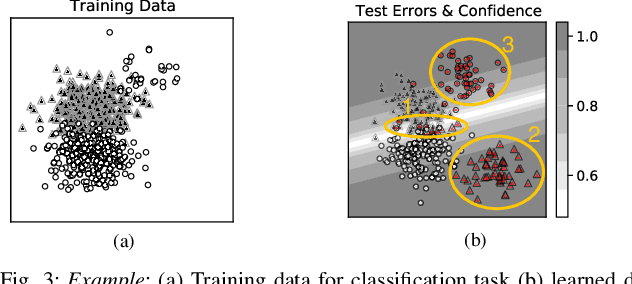
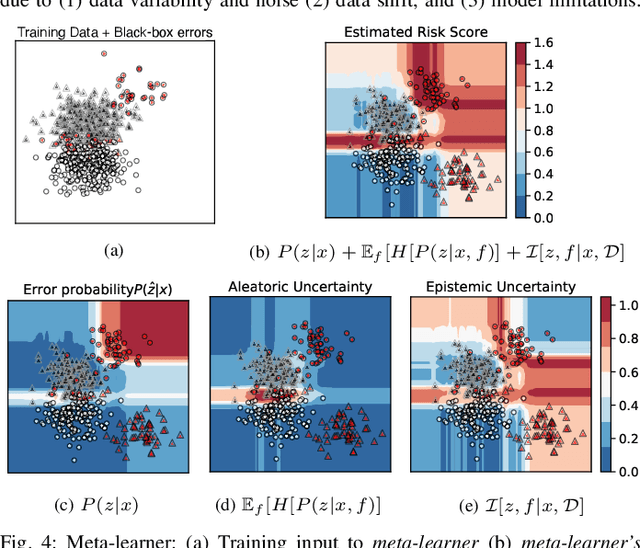
Abstract:Reliably predicting potential failure risks of machine learning (ML) systems when deployed with production data is a crucial aspect of trustworthy AI. This paper introduces Risk Advisor, a novel post-hoc meta-learner for estimating failure risks and predictive uncertainties of any already-trained black-box classification model. In addition to providing a risk score, the Risk Advisor decomposes the uncertainty estimates into aleatoric and epistemic uncertainty components, thus giving informative insights into the sources of uncertainty inducing the failures. Consequently, Risk Advisor can distinguish between failures caused by data variability, data shifts and model limitations and advise on mitigation actions (e.g., collecting more data to counter data shift). Extensive experiments on various families of black-box classification models and on real-world and synthetic datasets covering common ML failure scenarios show that the Risk Advisor reliably predicts deployment-time failure risks in all the scenarios, and outperforms strong baselines.
Accounting for Model Uncertainty in Algorithmic Discrimination
May 10, 2021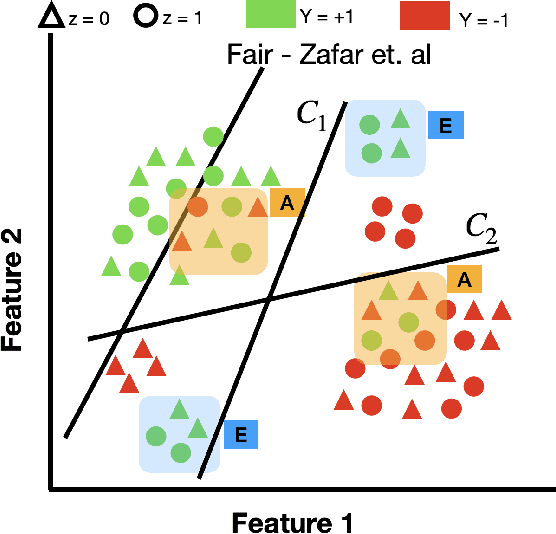



Abstract:Traditional approaches to ensure group fairness in algorithmic decision making aim to equalize ``total'' error rates for different subgroups in the population. In contrast, we argue that the fairness approaches should instead focus only on equalizing errors arising due to model uncertainty (a.k.a epistemic uncertainty), caused due to lack of knowledge about the best model or due to lack of data. In other words, our proposal calls for ignoring the errors that occur due to uncertainty inherent in the data, i.e., aleatoric uncertainty. We draw a connection between predictive multiplicity and model uncertainty and argue that the techniques from predictive multiplicity could be used to identify errors made due to model uncertainty. We propose scalable convex proxies to come up with classifiers that exhibit predictive multiplicity and empirically show that our methods are comparable in performance and up to four orders of magnitude faster than the current state-of-the-art. We further propose methods to achieve our goal of equalizing group error rates arising due to model uncertainty in algorithmic decision making and demonstrate the effectiveness of these methods using synthetic and real-world datasets.
Fairness without Demographics through Adversarially Reweighted Learning
Jun 24, 2020

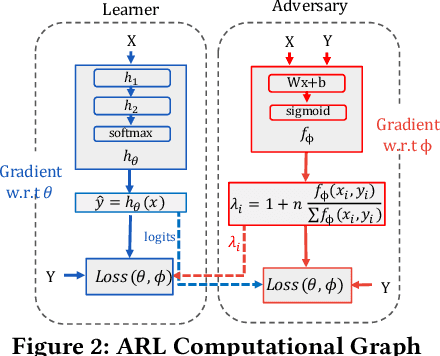

Abstract:Much of the previous machine learning (ML) fairness literature assumes that protected features such as race and sex are present in the dataset, and relies upon them to mitigate fairness concerns. However, in practice factors like privacy and regulation often preclude the collection of protected features, or their use for training or inference, severely limiting the applicability of traditional fairness research. Therefore we ask: How can we train a ML model to improve fairness when we do not even know the protected group memberships? In this work we address this problem by proposing Adversarially Reweighted Learning (ARL). In particular, we hypothesize that non-protected features and task labels are valuable for identifying fairness issues, and can be used to co-train an adversarial reweighting approach for improving fairness. Our results show that ARL improves Rawlsian Max-Min fairness, with significant AUC improvements for worst-case protected groups in multiple datasets,outperforming state-of-the-art alternatives.
An Empirical Study on Learning Fairness Metrics for COMPAS Data with Human Supervision
Oct 31, 2019


Abstract:The notion of individual fairness requires that similar people receive similar treatment. However, this is hard to achieve in practice since it is difficult to specify the appropriate similarity metric. In this work, we attempt to learn such similarity metric from human annotated data. We gather a new dataset of human judgments on a criminal recidivism prediction (COMPAS) task. By assuming the human supervision obeys the principle of individual fairness, we leverage prior work on metric learning, evaluate the performance of several metric learning methods on our dataset, and show that the learned metrics outperform the Euclidean and Precision metric under various criteria. We do not provide a way to directly learn a similarity metric satisfying the individual fairness, but to provide an empirical study on how to derive the similarity metric from human supervisors, then future work can use this as a tool to understand human supervision.
 Add to Chrome
Add to Chrome Add to Firefox
Add to Firefox Add to Edge
Add to Edge